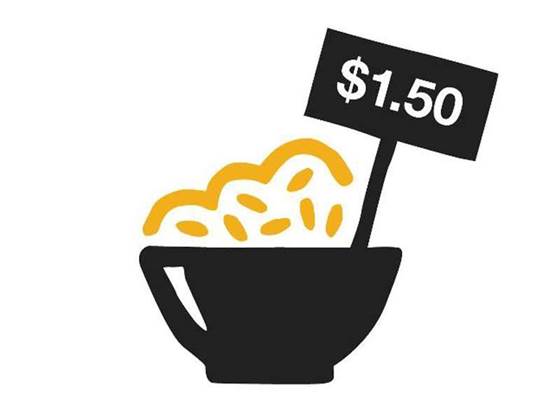Melbourne-born charity Live Below the Line attracted 15 percent more participants to its anti-poverty campaign after launching a four-month website overhaul last week.

Some 7500 Australians committed to feeding themselves with no more than $2 a day from Monday to Friday, collecting donations from their friends and family to do so.
Campaign general manager Dan Lewis-Toakley described it as “peer-to-peer fundraising" campaign that had collected a total of $1.67 million from Australian participants as of 14 March.
He expected to meet its Australian target of $2 million for the year, compared to $1.4 million from last year’s campaign.
“We’ve raised a lot more money,” he said, noting that 25 percent of funds were typically raised after the week-long event.
“The site provides a much better user experience and much better integration. More people sign up to participate because the sign-up process is easier.”
With only three full-time volunteers and zero in-house IT staff, Live Below the Line relied on ThoughtWorks Australia to upgrade its website in November.
The new site was delivered in March and underpinned Live Below the Line campaigns in Australia, New Zealand, the US and Britain.
It replaced a Canadian out-of-the-box fundraising platform that was hosted on Amazon Web Services data centres in the US, Europe and Singapore.
“[The old platform] wasn’t as complete a solution as we would have liked,” Lewis-Toakley said, citing a lack of integration with social media and between fundraising and online community aspects of the site.
“As part of the Oaktree Foundation, we strive in our campaign to be on the cutting edge ... [we wanted] the flexibility to integrate with whatever the next Facebook is.”
Lewis-Toakley said users had responded much more positively to the new site, built with Ruby on Rails on Salesforce.com’s Heroku platform. Any user-generated content stored on Amazon’s S3 service.
He said the charity had improved its forums and leaderboard, with future upgrades to introduce “gamification” through badges and point systems, and some form of “personalisation and exclusivity” to foster a sense of community.
The new site was also cheaper to run, he said, without disclosing costs. He noted campaign organisers were able to scale its Heroku resources to deal with traffic peaks “within minutes”.
Live Below the Line doubled its capacity three times to reach eight times the website's initial capacity as the campaign at its peak, easily handling 52,860 unique visitors on May 8.
“User generated content is uploaded to S3 so our disk space scales automatically,” Lewis-Toakley noted.
“We only have to ensure that we have enough processing power and bandwidth to handle the requests, and we only pay for that capacity when we need it; we can scale back after the peak campaign week.”


_(22).jpg&h=140&w=231&c=1&s=0)


_(20).jpg&h=140&w=231&c=1&s=0)



_(26).jpg&w=100&c=1&s=0)

 iTnews Executive Retreat - Security Leaders Edition
iTnews Executive Retreat - Security Leaders Edition












_(1).jpg&h=140&w=231&c=1&s=0)



